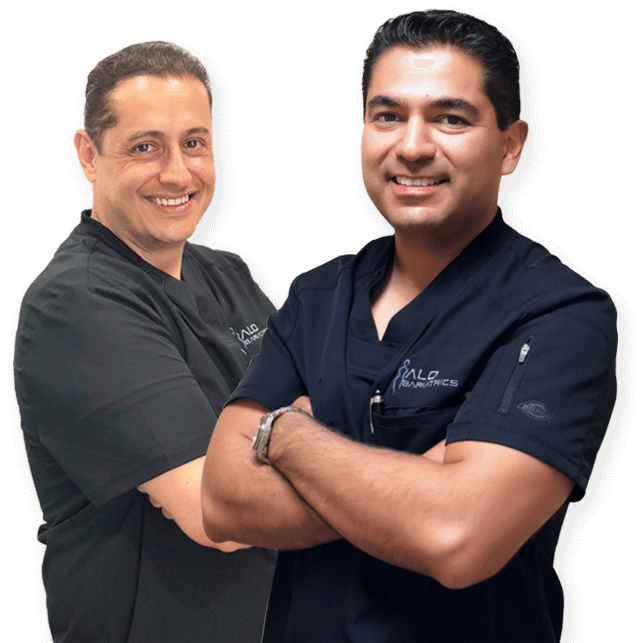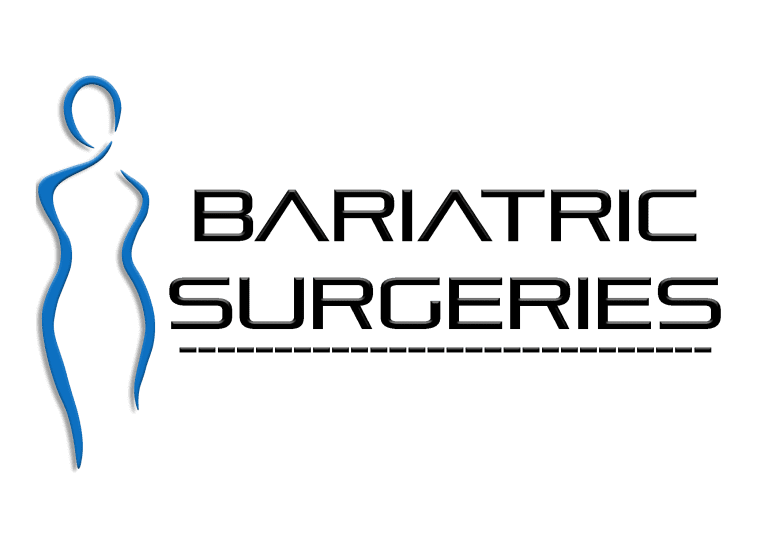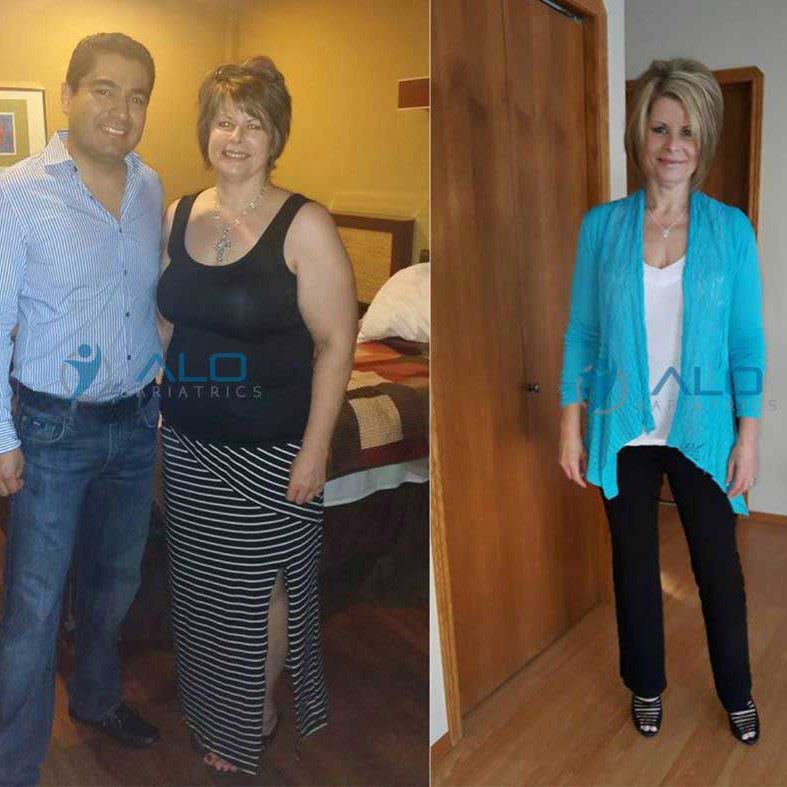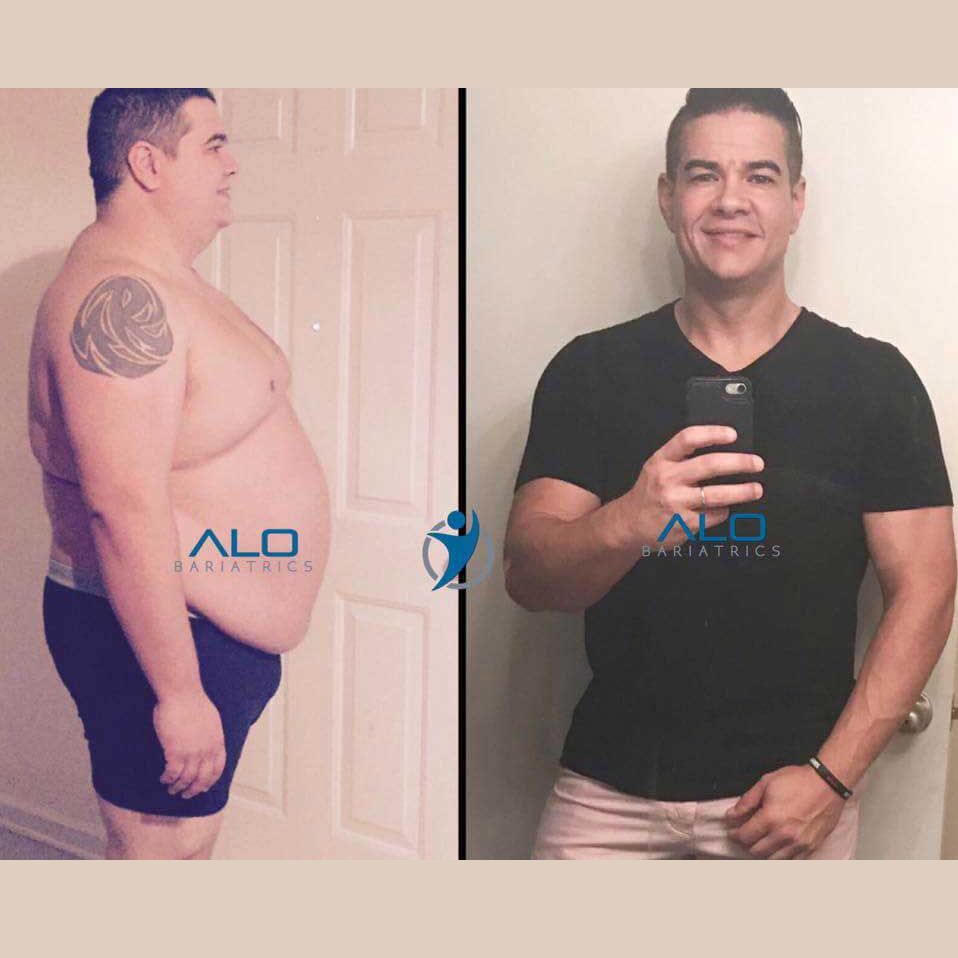SADI-S in Tijuana, Mexico
Understanding SADI-S Surgery
In 2020, the American Society for Metabolic and Bariatric Surgery released its statement on the single anastomosis duodenoileal bypass with sleeve gastrectomy (SADI-S) procedure. The procedure is relatively novel and aims to reduce the risks associated with the biliopancreatic duodenal switch (BPD-DS) procedure. It’s been used as a duodenal switch substitute and a revision surgery for those who did not lose enough weight after gastric bypass surgery. After several studies and thousands of operations, this novel procedure meets the criteria to be considered safe and effective for patients who want to lose weight. If you want to learn more about the SADI-S procedure and whether it’s the right choice for your weight loss goals, schedule a consultation with ALO Bariatrics today!
Why Choose ALO Bariatrics for SADI-S procedure in Mexico?

Safety:
Our medical center in Tijuana provides the highest standards of patient care. We pride ourselves in keeping our patients safe by using the most up-to-date surgical techniques.

Luxury:
Patients who visit ALO Bariatrics are treated like guests at an upscale hotel. Hotel accommodations and meals are included in the price so you can recover in luxury and comfort.

Effectiveness:
At ALO Bariatrics, we only perform procedures that are proven to have positive long-term effects on weight loss. Our surgeons have received training at the most prestigious global surgical centers.

A Groundbreaking Advancement in Bariatric Surgery
Bariatric surgery has advanced greatly over the decades. The duodenal switch (BPD-DS) surgery was created to address complications with biliopancreatic diversion (BPD). Both surgeries aim to produce massive weight loss in morbidly obese patients. Today, the SADI-S procedure aims to make the results of the BPD-DS procedure available to more people.
Sleeve Gastrectomy
Sleeve gastrectomy has proven to be one of the most popular bariatric procedures due to its efficacy and low cost for consumers. It creates a gastric sleeve by removing about 80% of the stomach and connecting the smaller stomach to the small intestine. This procedure effectively reduces hunger and food intake with fewer complications and shorter recovery compared to the Roux-en-Y gastric bypass.
Duodenal Switch Surgery
Duodenal switch surgery was created to help the most obese patients achieve staggering rates of weight loss. The most common version, the biliopancreatic diversion with duodenal switch (BPD-DS), combines a gastrectomy with an intestinal bypass. It’s highly malabsorptive, meaning that patients will not absorb as many calories from their food. This procedure is most effective for highly obese patients with severe Type 2 diabetes.
Combining the Two Techniques
Sleeve gastrectomy is typically part of the duodenal switch surgery. In fact, sleeve gastrectomy was first performed as part of a malabsorptive bariatric surgery before it was ever used in isolation. Sleeve gastrectomy alone produces great results for most patients. However, some patients still need both in order to attain and maintain the weight loss they need.
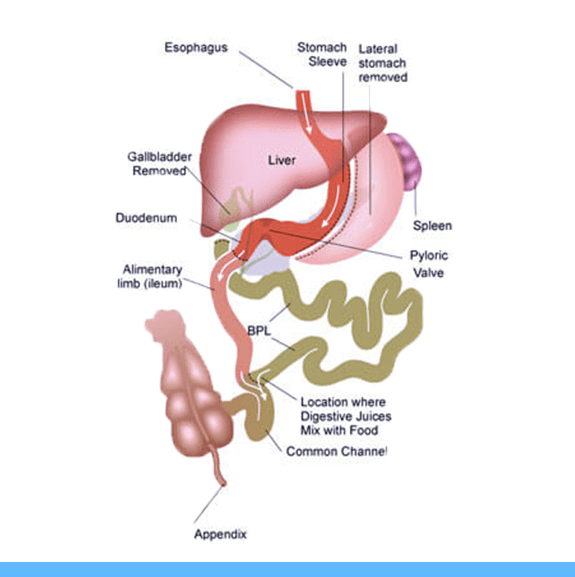
Calculate Your Body Mass Index (BMI)
Expected Weight Loss Results with SADI-S Surgery
SADI-S surgery has been tested in multiple clinical trials with various different factors. The studies show an excess weight loss of between 70% and 90% after two years. These results are similar to those of the BPD-DS duodenal switch procedure, making it very effective as both an initial intervention and a revision surgery for those who did not see enough weight loss with their first procedure. Better yet, complication rates tend to be lower among SADI-S patients compared to BPD-DS patients who are using the surgery as an initial intervention. As a revision surgery, SADI-S has similar weight loss results to BPD-DS and similar complication rates.
SADi-S is a weight loss surgery that combines restrictive and hypoabsorptive techniques to help patients achieve a significant reduction in BMI. It’s a less complex procedure compared to the duodenal switch surgery, which rearranges the intestines, but achieves similar results. The surgery reduces the size of the stomach to limit food intake and reroutes a portion of the small intestine to reduce calorie and nutrient absorption. This makes SADi-S an effective option for patients seeking significant weight loss with a less invasive procedure.
Advantages of SADI-S Surgery
One benefit of SADI-S surgery is that it enables the patient to lose more weight thanks to a malabsorption procedure, which shortens the journey digested food goes through the intestines. During the procedure’s second stage, a patient’s new stomach sleeve is attached to a short intestinal loop, skipping most of the small intestine. The bypass sends food through just 10 feet of the small intestine, allowing the body to absorb fewer calories and fat.
SADI-S eliminates less of the intestine than other forms of bariatric surgery, allowing your body to absorb more nutrients. However, you will still need to take vitamins indefinitely after the surgery.
Because SADI-S creates just one new intestinal connection, there is less chance of contents spilling from the gut into the body cavity. This single connection also offers the added benefit of avoiding internal hernia.
Differences Between DS Surgery and SADI-S
The difference between the duodenal switch and the SADI-S procedure is that the intestinal bypass is replaced with a single-anastomosis duodenoileostomy that has a longer channel, reducing the complications that were caused by malabsorption. The duodenal switch has a history of causing nutrient deficiencies in patients. Typically, these deficiencies were treated using multivitamins. However, some of the unwanted side effects of the duodenal switch include diarrhea, ulcers, and hypoalbuminemia (low albumin content in blood, which can cause a whole host of problems). The SADI-S procedure aims to address those problems in a way that allows surgeons to perform the procedure more easily.
Are You A Good Candidate for SADI-S Surgery in Tijuana Mexico?
Candidates for SADI-S surgery generally fall under one of these criteria:
- BMI over 40
- Have Type 2 diabetes, high blood pressure, sleep apnea, or some other obesity-related health condition
- Have tried to lose weight with diet and exercise with no results
In summary, we recommend SADI-S surgery for those who are severely obese and are looking for a powerful procedure that delivers results in nearly all patients who get it, regardless of diet history.
There are alternatives to the SADI-S procedure for most patients looking to get bariatric surgery for the first time. For most patients, sleeve gastrectomy will produce the weight loss results you need at an affordable cost with minimal risk of complications.
SADI-S can also be performed as revision surgery for those who did not lose the desired weight after getting a gastric bypass or a gastric sleeve. If you are in need of revision surgery, you’ll need to consult with our surgeon to see if the SADI procedure in Mexico is right for you.
Call (619) 653-6739 for Life-Changing Weight Loss Solutions.
Recovering from SADI-S
Recovering from the SADI-S procedure is much like recovering from any bariatric procedure. After the surgery, you must follow a post-op diet and take it easy for a few weeks. You should not need more than one week off work. However, this will depend on what you do for work and how much your work is impacted by recovery. Most patients can walk and do basic tasks around the house after a few days. However, avoid more strenuous activities, such as exercising or lifting heavy objects, until the doctor says it’s okay.
Patients will recover in the hospital for a few hours after SADI surgery in Mexico, then recover in paid-for accommodations provided by ALO Bariatrics. We keep patients longer to monitor them for potential complications. Some common side effects of SADI-S surgery include diarrhea, nausea, abdominal pain, gas, and pain near the site of the incisions. Please contact your surgeon if you have more serious side effects or complications.
Pre-Op Diet
Before surgery, patients must adhere to a precise pre-operative diet before the surgeon can bring you in. The length of the pre-operative diet is determined by your BMI and might range from 2 days to 8 weeks. The goal is to reduce the size of your liver so that the surgeon can operate safely and without interference from internal organs. Tobacco products, including vapes and cigarettes, should be avoided for at least one month prior to surgery. Tobacco can make it harder for your body to heal and increase surgery risks.
The diet in the weeks before surgery consists of lean proteins, reduced carbohydrates, and low sugar. Alcohol is not permitted for at least two weeks beforehand. Then, you’ll undergo a two-day clear liquid diet where you’ll stop eating solid meals. Protein smoothies, clear broths (chicken, vegetable, beef, or bone), vegetable juice, sugar-free beverages, or other clear juice without pulp or carbonation are allowed during this stage. You will also have to go on a water-only fast for 48 hours before surgery.
Post-Op Diet
Your surgeon will put together your post-op diet and give it to you after surgery. The post-op diet is part of every bariatric procedure and is a necessary part of recalibrating your digestive system after it has been surgically transformed.
Only clear liquids, including water, black coffee, and tea, will be allowed for the first few days. After that stage, you’ll be able to consume blended beverages such as protein shakes and fruit juices. That stage usually lasts between 1 and 2 weeks.
Next, you’ll be able to consume soft foods. Soft foods include scrambled eggs, mashed potatoes, ground beef, yogurt, and any approved food that does not need much chewing. After this stage, you’ll be able to reintroduce more foods into your diet.
Some foods must be avoided entirely for at least the first month. These include spicy foods, fried foods, alcoholic beverages, and foods high in sugar. Most importantly, reintroduction will differ from patient to patient. Some patients may experience food intolerances that they hadn’t experienced before.
Different patients progress through this diet at different paces, so it’s important not to compare your stage in the diet with anyone else’s.
FAQ about Single-Anastamosis Duodenal Switch in Mexico
What is the duration of the SADI-S procedure?
The procedure itself will take about two and a half hours. However, the length of the procedure will vary depending on multiple factors, including total weight and whether you’re using the SADI-S procedure as a revision of a previous bariatric procedure.
How long is the hospital stay for SADI-S surgery?
Typically, the hospital stay is an outpatient procedure. However, you may be kept overnight to allow you to recover. We will book you a hotel stay for as long as you will need for recovery so you can travel in relative comfort.
How does life change after SADI-S surgery?
Life will change in many different ways. You can expect to lose over half of your excess weight in the first year after surgery. To keep that weight off, maintaining a healthy diet will be key. You’ll also need to take a special multivitamin which will prevent you from developing nutrient deficiencies.
Do I need to follow a diet plan after SADI-S surgery?
Yes. Patients undergoing the SADI-S procedure will need to obey a pre-op and post-op diet in order to make the surgery both safe and effective. We’ve included more details on these diets on this page.
